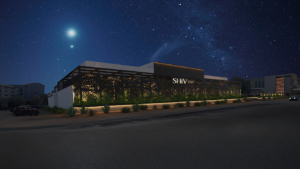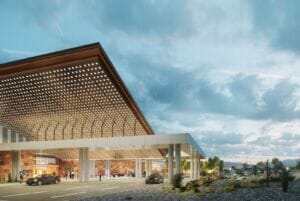The European Renaissance of the 14th through 17th centuries was a time of rediscovery and rebirth, ushering in some of the most memorable works — from the printing press and microscope to the Mona Lisa and Sistine Chapel (to name a very few). Now, largely due to future infrastructure planning and innovative thought leaders, PHX East Valley downtown regions are experiencing their own kind of renaissance. From mixed-use marvels and one-of-a-kind retail options to education hubs and opulent outdoor areas, East Valley downtowns — Tempe, Gilbert, Chandler and Mesa — are carving a space in Arizona’s history books.
DEEPER DIVE: How the PHX East Valley is transforming electric vehicles industry
Infrastructure and right timing
The Renaissance of centuries past was a byproduct of “right timing.” Currently, the vibrancy and rebirth of several Phoenix East Valley downtown areas are on hyperdrive. And, much of their success can be attributed to preparation and planning that began decades ago.
“What’s really interesting, for Gilbert, is our downtown is a redevelopment area,” explains Amanda Elliott, redevelopment program manager for the Town of Gilbert. “It was designated like that in 1989. And so we have a redevelopment plan that really takes the community’s input and then puts their input into goals and tactics.”
Adds Kim Moyers, cultural development director for the City of Chandler, “Downtown Chandler has been decades in the making. The city council invested in upsizing and upgrading all of the infrastructure. We’ve seen all new roads along Arizona Avenue, wider sidewalks and trees for shading that makes it very inviting.”
In Mesa, a well-conceived infrastructure is responsible for the city’s successful downtown rejuvenation and expansion. “The city has invested in the light rail, the Mesa Art Center and partnering with Arizona State University (ASU), and it’s also just got great character,” says Mesa Mayor John Giles.
Because of the ingenuity and forethought of infrastructure planning, combined with the East Valley’s reputation for stellar leadership collaboration, Tempe, Gilbert, Chandler and Mesa have been able to meet the demand for more dynamic offerings in key downtown hotspots.
“Residents and visitors are expecting that kind of amenity in suburban communities now,” Elliott says. “And so you’re seeing Mesa, Gilbert, Chandler all really focused on reinvesting and revitalizing.”
Giles agrees, adding, “I think you’re going to see more people that are drawn to a more urban lifestyle and a less car-centric lifestyle where they have great entertainment options, can park their car and work from home or work from a co-work space downtown.”

East Valley downtowns: History meets unique offerings
In addition to smart infrastructure investments and planning, Tempe, Chandler, Gilbert and Mesa share in the capitalization of their historical attributes, while also being autonomous in their more individual and unique offerings.
The Gilbert Water Tower, originally erected in 1927 and now restored, has become the focal point of the Gilbert Heritage District in the downtown area.
“We draw people [to the Gilbert Water Tower] specifically for all kinds of events,” says Gilbert Mayor Brigette Peterson. “We don’t light a Christmas tree in Gilbert. We light the water tower. It’s a really wonderful amenity to have in our downtown as a historic area of the community.”
Jimmy Lindblom, who manages community outreach for Willmeng and is also chairman of PHX East Valley Partnership — and also happens to live in Gilbert — describes the water tower as the “family room” of Gilbert’s downtown. Willmeng is now in the beginning stages of working with the Town of Gilbert to build out this focal point.
“[The town] is investing some dollars and has been out in the community to get input on what they would like for the area. We’ll see where it all leads, but we’re excited to be a part of it,” Lindblom says.
Much like Gilbert, Chandler’s downtown renovation includes preserving its history. “Chandler started within our downtown,” Moyers says. “It’s over 100 years old, so we have these beautiful, older buildings.”
Moyers goes on to explain that new downtown development, mixed with honoring the city’s history has created a “cool, funky and vibrant,” atmosphere that’s helped encourage continued growth and momentum.
Another way that Chandler differentiates itself from neighboring downtowns is its policy for dining to remain local. No chain restaurants are permitted in the City Center District.

Tempe transitions
Tempe allocated $8 million in renovations to help preserve its downtown historical integrity, while also introducing fresh, exciting contributions as part of its Refresh Tempe program.
“Tempe has one of Arizona’s most historic, and yet most energizing downtowns,” says Tempe Mayor Corey Woods. “You can literally step off the Valley’s only streetcar and go to your technology job in a state-of-the-art building, and also walk down tree-lined, brick sidewalks enjoying the architecture of beautiful buildings built in the 1800s.”
The Hayden Flour Mill serves as a prime example of Tempe’s achievement of taking a historic landmark and reimaging it into something truly dynamic. Built in 1874, it was once the home of Charles Trumbull Hayden, father of Senator Carl Hayden and owner of the Hayden Flour Mill. Today, Hayden House is the home of Downtown Tempe Authority.
While Mesa certainly has its share of historic downtown buildings and areas, one of the city’s captivating stories from more recent history comes from the early 2000s, and features what has now become the thriving Asian District.
“Peter Quach, who was a Vietnamese refugee, came to the United States with nothing, got into the Asian grocery store business in San Francisco, came to Mesa, bought a boarded up store which is now Mekong Plaza,” Giles says.
“Along Dobson Road,” he continues, “beginning at Main Street, going all the way along this corridor in Mesa, we have over 80 Asian-themed businesses.”
Education destinations
One of the exciting additions to several Phoenix East Valley downtown destinations is educational offerings.
Tempe has long been recognized for housing several colleges and universities downtown, including the University of Advancing Technology, Maricopa County Community College District, and the main campus of Arizona State University (with more than 65,000 students).
ASU at Mesa City Center has been significant in the revitalization of Downtown Mesa, bringing attention to the area with the MIX Center, the newly coined Sidney Poitier New American Film School and other programs within the Herberger Institute for Design and the Arts, as well as the Ira A. Fulton Schools of Engineering.
“ASU is going to continue to add more buildings,” Giles says. “[The City Center] is a great location for them because it’s just a few Light Rail stations from the Tempe campus.”
Gilbert’s downtown Heritage District houses Park University, University of Arizona and the University of Arizona College of Nursing — all in a collective building.
“We did a ribbon cutting with [the College of Nursing] in December,” Peterson says. “And they are so excited to be in that space and we’re really excited for them to have the programs that they have there because they’re doing an integrative nursing program that I don’t think is being done any place else, maybe even in the country.”
Mixed-use momentum
Mixed-use may not be new to downtown development, considering square footage is often scarce, but Phoenix East Valley downtowns are adding their own special touches to the trend.
“I think the most exciting [mixed-use project] for me is the 9.1-acre site just north of the power line that’s bordered by Juniper and Gilbert Roads that closed in July,” Peterson says. “And we’re hoping that that project will break ground a little bit later this year. It’s going to have 170,000 square feet of office space, 30,000 square feet of retail and restaurant, a boutique hotel and 288 units of residential.”
Over on the south end of Gilbert’s downtown, is the “south anchor,” a 300,000-square-foot, mixed-use development with residential and amenities on the ground floor, according to Dan Henderson, director of economic development for the Town of Gilbert.
Of course, Tempe’s much-discussed, mixed-use jewel is 100 Mill. The 286,990-square-foot, 15-story, class AA office tower boasts an onsite hotel, conference room, roof-top amenities and more.
In Chandler, Moyers points to the city’s mixed-use Overstreet development, a 31,804 square-foot, mixed-use project. “Phase one of Overstreet includes a new movie theater — Look Cinemas — with a two-story building that has retail on the bottom and office on the top,” she says.
In Mesa, Caliber has been integral in mixed-use activity, adding 10 buildings and an estimated 160,000 square feet of mixed-use space.
On the horizon
The European Renaissance that produced countless art, literary and other works is difficult to condense into a single story, and it’s not much different when appraising all the downtown projects proliferating Tempe, Gilbert, Mesa and Chandler — and more is yet to come.
“A lot of the focus that we’re going to see in the future is the expansion of our downtown to the South,” Moyers says. “Now that our downtown core is completely filled, we see developers who are interested in continuing the success of the downtown further to the south.”
For Gilbert, the focus remains on providing a mix of retail — especially restaurant options — throughout the Heritage District.
“[Residents] have been asking for amenities, and that’s been our goal all along,” Peterson says, “to be able to bring these to the Heritage District, and in other areas of the town too, but the Heritage District is definitely a gem for us.”
Adds Donna Kennedy, Tempe economic development director, “People like coming [to Tempe] because of the number of things you can do once you’ve arrived. You can climb a mountain or go paddleboarding on your lunch hour, have happy hour right next to your office, or even walk out the door to a special event like the Tempe Festival of the Arts. It makes coming to work fun.”




